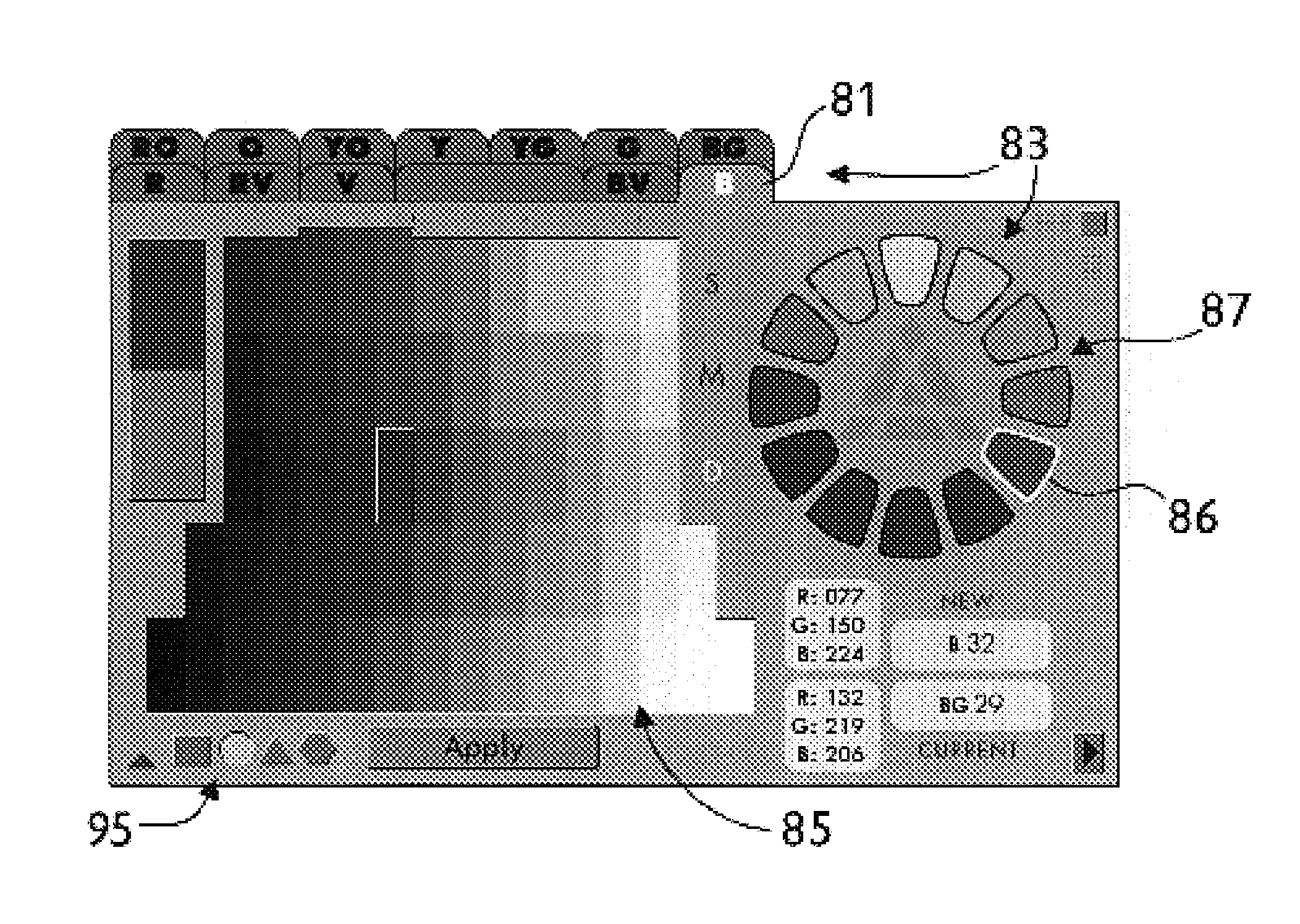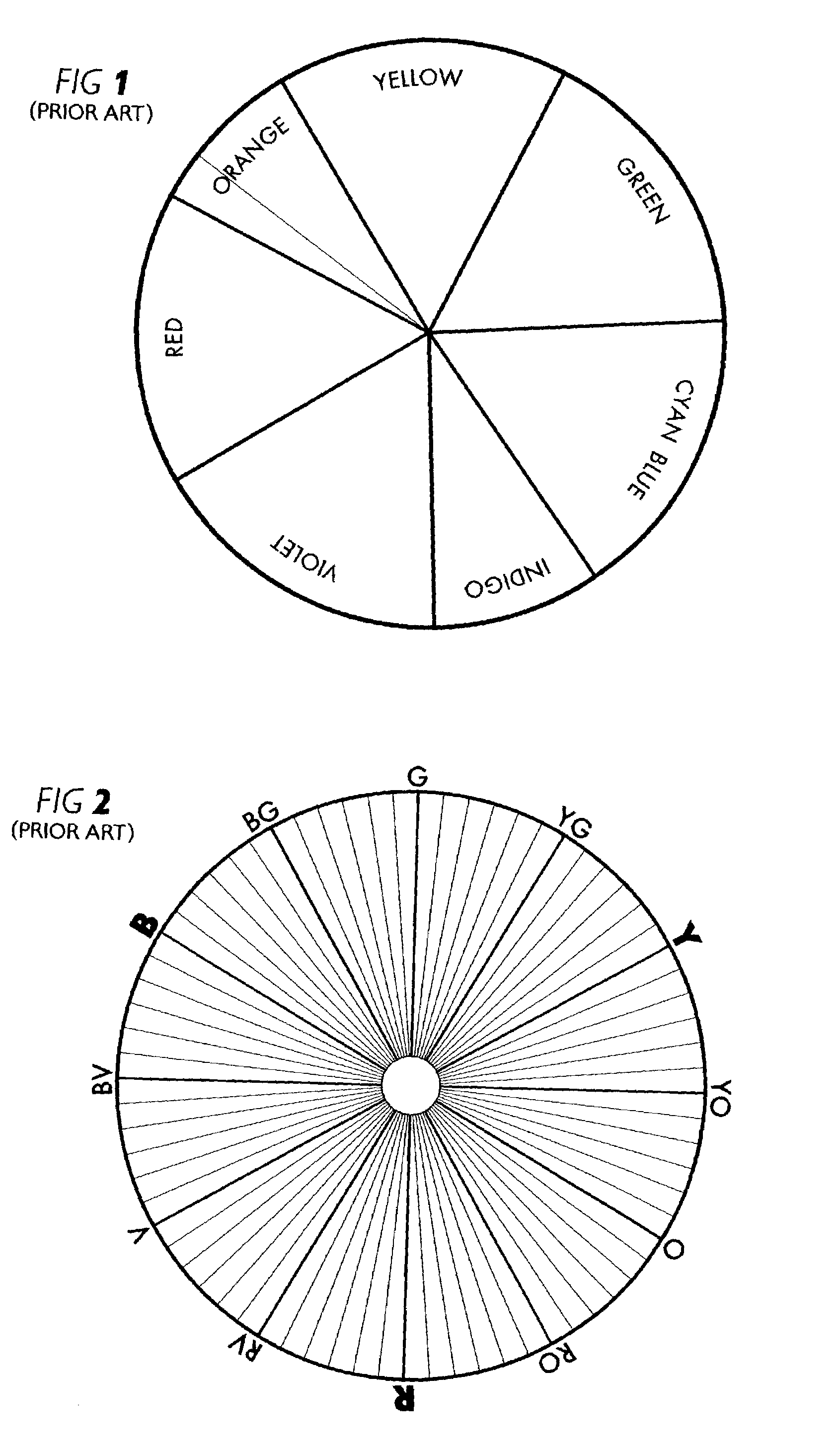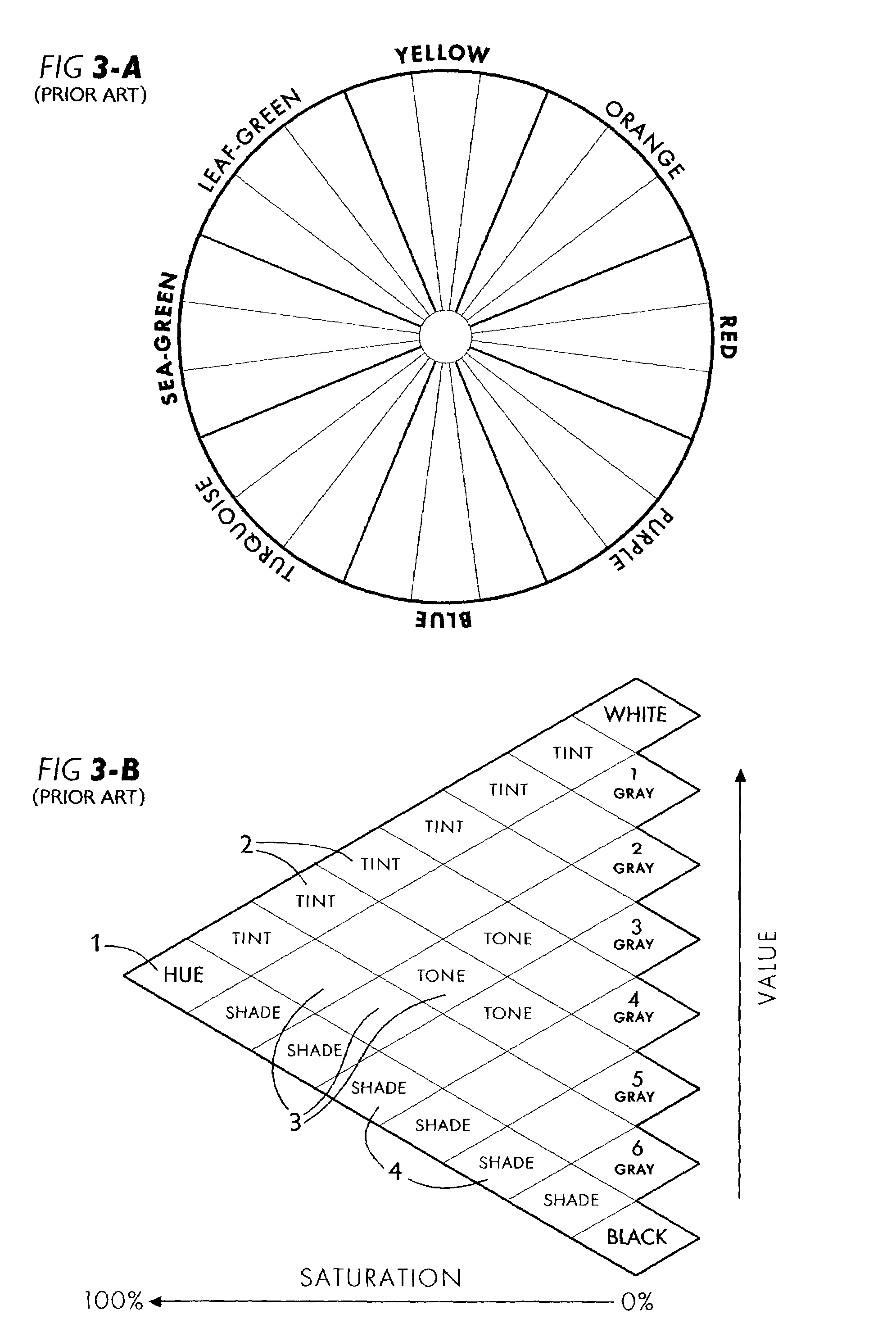Artists' color display system
a color display and artist technology, applied in the field of color display systems, can solve the problems of inability to meet both color memory is short-lived, and color-appearance systems that do not adequately meet traditional and technological needs, etc., to achieve the effect of facilitating mixing and matching
- Summary
- Abstract
- Description
- Claims
- Application Information
AI Technical Summary
Benefits of technology
Problems solved by technology
Method used
Image
Examples
Embodiment Construction
—OVERALL SYSTEM
[0239]According to the invention, my system provides samples of the visible spectrum as an assortment of discrete color elements. These color elements are selected and arranged according to the three well-known attributes of color, i.e., hue, value, and saturation: Hue, in scientific terms, is the wavelength of light reflected from, transmitted through, or emitted by an object. It also is the name of a color such as “red,”“violet,” or “green.” Value is the darkness or lightness of a color relative to a scale of neutral or achromatic (colorless, having no hue) grays ranging from black to white. Saturation (also called chroma) is the purity or strength of a color's hue relative to a neutral gray of similar value. It is often indicated as a percentage from 0% (completely neutral), e.g, the just-mentioned neutral gray scale, to 100% (fully saturated) which indicates a pure hue, without any white, gray, or black added to it. (Saturation is well-illustrated by Ostwald's con...
PUM
 Login to View More
Login to View More Abstract
Description
Claims
Application Information
 Login to View More
Login to View More - R&D
- Intellectual Property
- Life Sciences
- Materials
- Tech Scout
- Unparalleled Data Quality
- Higher Quality Content
- 60% Fewer Hallucinations
Browse by: Latest US Patents, China's latest patents, Technical Efficacy Thesaurus, Application Domain, Technology Topic, Popular Technical Reports.
© 2025 PatSnap. All rights reserved.Legal|Privacy policy|Modern Slavery Act Transparency Statement|Sitemap|About US| Contact US: help@patsnap.com



